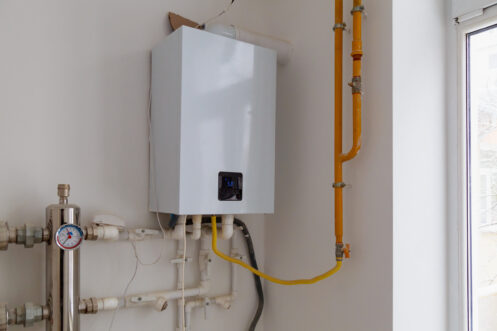Best Methods to Care for Your Home's Hot Water System EffectivelySteps to Prolong the Life of Your Home's Hot Water System Through Maintenance
Best Methods to Care for Your Home's Hot Water System EffectivelySteps to Prolong the Life of Your Home's Hot Water System Through Maintenance
Blog Article
Just how do you actually feel in relation to How to Maintain Your Water Heater & Prolong its Life?

Warm water is crucial for everyday comfort, whether it's for a revitalizing shower or washing dishes. To ensure your warm water system runs effectively and lasts much longer, normal maintenance is key. This article gives sensible pointers and understandings on just how to keep your home's warm water system to prevent disruptions and costly repairs.
Intro
Keeping your home's warm water system may seem difficult, however with a few simple actions, you can guarantee it operates smoothly for many years ahead. This overview covers every little thing from understanding your hot water system to DIY upkeep pointers and recognizing when to hire expert assistance.
Relevance of Keeping Your Hot Water System
Normal upkeep not just prolongs the life expectancy of your hot water system but also ensures it operates efficiently. Ignoring upkeep can cause lowered performance, greater energy bills, and even premature failing of the system.
Indicators Your Hot Water System Needs Maintenance
Recognizing when your warm water system requires interest can avoid major issues. Keep an eye out for indicators such as inconsistent water temperature, strange sounds from the heating system, or rustic water.
Comprehending Your Hot Water System
Prior to diving right into maintenance tasks, it's handy to recognize the fundamental components of your hot water system. Commonly, this includes the water heater itself, pipelines, anode poles, and temperature level controls.
Month-to-month Upkeep Tasks
Routine regular monthly checks can help capture small problems before they escalate.
Flushing the Hot Water Heater
Purging your hot water heater eliminates sediment buildup, improving performance and lengthening its life.
Monitoring and Replacing Anode Rods
Anode rods prevent deterioration inside the container. Examining and replacing them when broken is important.
Examining and Adjusting Temperature Level Settings
Adjusting the temperature level settings makes sure ideal performance and safety.
DIY Tips for Upkeep
You can carry out several maintenance jobs on your own to keep your hot water system in leading problem.
Checking for Leaks
Regularly inspect pipelines and links for leaks, as these can lead to water damages and greater bills.
Testing Stress Alleviation Valves
Evaluating the pressure relief valve guarantees it operates properly and prevents too much stress accumulation.
Insulating Pipelines
Protecting hot water pipelines reduces heat loss and can conserve power.
When to Call an Expert
While DIY maintenance is beneficial, some concerns need expert knowledge.
Complex Concerns Calling For Expert Aid
Instances include major leakages, electrical problems, or if your hot water heater is consistently underperforming.
Regular Professional Upkeep Benefits
Specialist maintenance can consist of comprehensive evaluations, tune-ups, and guaranteeing compliance with safety standards.
Conclusion
Routine maintenance of your home's hot water system is vital for effectiveness, durability, and expense financial savings. By complying with these ideas and recognizing when to look for specialist assistance, you can make certain a trustworthy supply of warm water without unforeseen interruptions.
How to Maintain an Instant Hot Water Heater
Before tinkering with your hot water heater, make sure that it’s not powered on. You also have to turn off the main circuit breaker and shut off the main gas line to prevent accidents. Also turn off the water valves connected to your unit to prevent water from flowing into and out of the appliance. 2. When you’re done, you have to detach the purge valves’ caps. These look like the letter “T” and are situated on either side of the water valves. Doing so will release any pressure that has accumulated inside the valves while at the same time avoid hot water from shooting out and burning your skin. 3. When the purge valves’ caps are removed, you have to connect your hosing lines to the valves. Your unit should have come with three hoses but if it didn’t, you can purchase these things from any hardware or home repair shops. You can also get them from retail stores that sell water heating systems. Read the user’s manual and follow it to complete this task properly. When the hosing lines are connected, open the purge port’s valves. 4. You should never use harsh chemical cleaners or solutions when cleaning your unit. Make use of white vinegar instead. It should be undiluted and you’ll probably use about 2 gallons. 5. Now flush your water heater. This task should probably take about 40 minutes. We can’t give you specific directions for this because the procedure is carried out depending on the type, model and brand of your heater. With that being said, refer to the user’s manual. 6. When you’re done draining the unit, you have to turn off the purge port valves again. Remove the hosing lines that you earlier installed on each of the water valves. Put the valve caps (purge port) back in their respective places and be very careful so as not to damage the rubber discs that are found inside these caps. 7. Now that everything’s back in place, check your user’s manual again to find out how to reactivate your water heating system. 8. Once it is working, turn one of your hot water faucets on just to let air pass through the heater’s water supply pipes. Leave the tap on until water flows smoothly out of it. https://www.orrplumbing.com/blog/2014/september/how-to-maintain-an-instant-hot-water-heater/

I was shown that editorial about Tips For Maintaining Your Hot Water Heater through an associate on another web property. Remember to pause to promote this blog if you enjoyed it. I am grateful for your time. Return soon.
Start Now Report this page